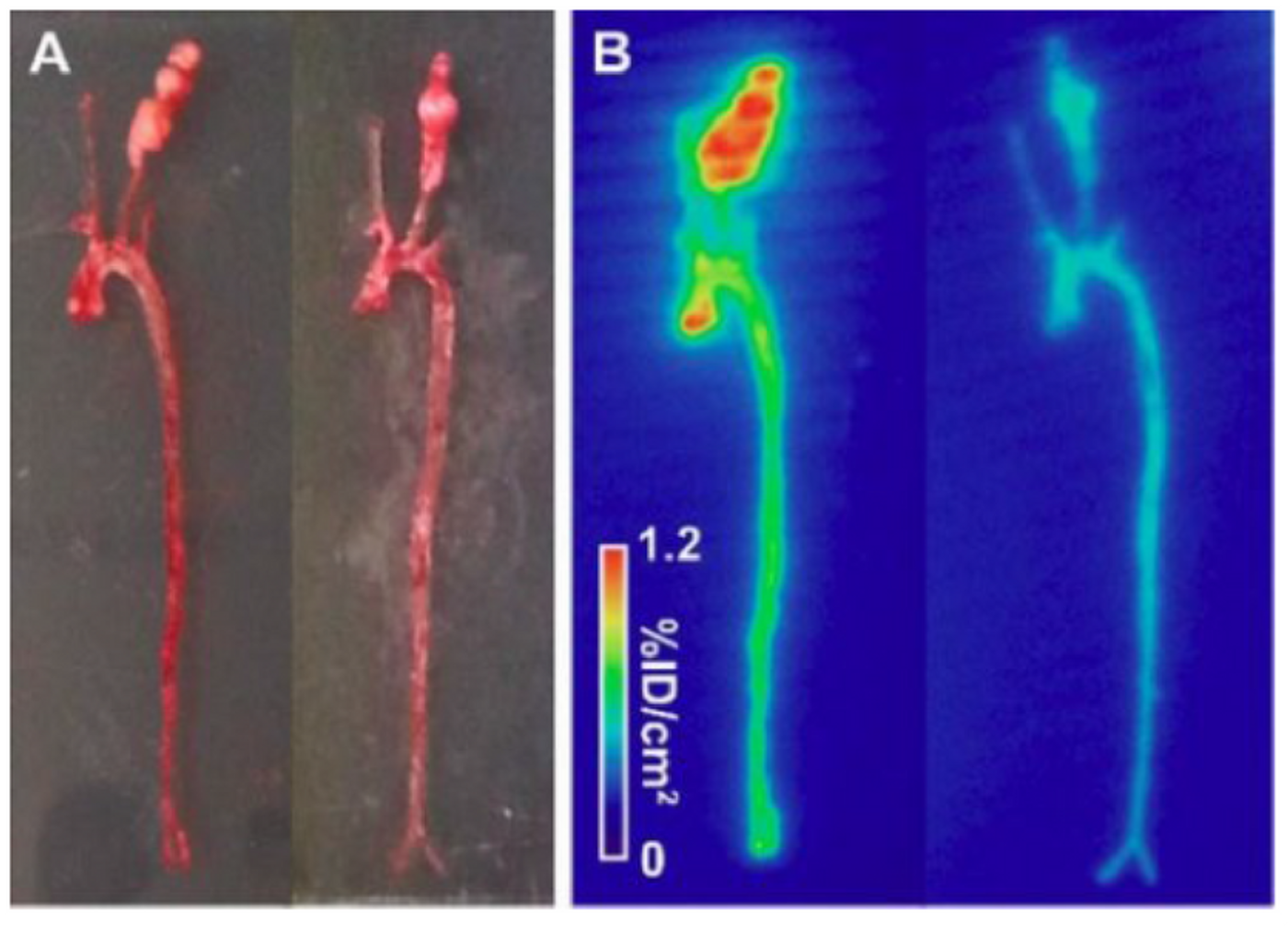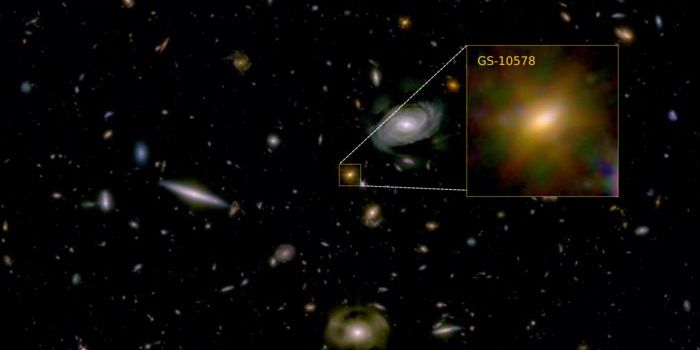New imaging tracer allows better assessment of abdominal aortic aneurysm risk
A common vascular disorder among male at or over 50, abdominal aortic aneurysm (AAA) is a localized blood filled bulge of the abdominal aorta. The diameter of the enlargement is usually greater than 3 cm or more than 1.5 times the normal aortic diameter. The rupture of AAA may lead internal bleeding, pain, low blood pressure, loss of consciousness, or even death. In US and UK, males over 65 are encouraged to screen for AAA with ultrasound. Since there is no effective AAA treatment and repair of large AAA is quite invasive, doctors and scientists have been searching for a better way to manage AAA.
Photographic (A) and autoradiographic (B) imagesof mouse carotid aneurysm. Left panel: Tc-99m-RYM1 only. Right panel: Tc-99m-RYM1 blocked by non-radioactive RYM. Credit: Jakub Toczek, Yunpeng Ye, et al., Yale Cardiovascular Research Center, New Haven, Connecticut
A group of researchers from Yale Cardiovascular Research Center has come up with a SPECT/CT method that can effectively evaluate the rupture risk of AAA. In the center of their strategy is a matrix metalloproteinases inhibitor-based ligand RYM1, radiolabeled with gamma ray emitting isotope Technetium-99m (Tc-99m).
Remodeling and inflammation are the hallmarks events during the development of an aneurysm, in which matrix metalloproteinases (MMPs) play a key role at the cellular level. MMPs are calcium-dependent zinc-containing endopeptidases. These enzymes are capable of degrading extracellular matrix proteins. They are actively involved in a variety of cellular processes such as chemokine and cytokine inactivation, angiogenesis, apoptosis, and host defense.
Currently, the most common tracer used in AAA diagnosis is Tc-99m-RP805. But due to its slow blood clearance (which delays scan window) and poor water solubility (which affects specific binding study), Tc-99m-RP805 is not an ideal candidate for further development. In the study conducted by the Yale group, RYM1 not only showed excellent binding kinetics but also good stability and fast blood clearance when labeled and injected into animals. Images of aneurysm model demonstrated clear vessel wall with high sensitivity and specificity, and the tracer uptake in aorta correlates with vessel wall inflammation analysis.
Looking ahead, the researchers hope that once the diagnostic strategy using Tc-99m-RYM1 is validated in humans, it can improve the risk management of patients with AAA and other dysregulated MMP-associated disorders. "Fulfilling the potential of molecular imaging in improving patient care and advancing research is critically dependent on the development of novel tracers with real potential for clinical translation. Remodeling and inflammation are fundamental biological processes which are implicated in the pathogenesis of several diseases, spanning from cancer to heart attack and stroke. MMPs play a key role in tissue remodeling and inflammation. Further development of RYM1-based imaging could expand the applications of molecular imaging and nuclear medicine, and improve patient management in a wide range of diseases," said the team leader Dr. Mehran M. Sadeghi of the Yale Cardiovascular Research Center.
Abdominal aortic aneurysm. Credit: Khan Academy Medicine
Source: Journal of Nuclear Medicine/Science Daily









